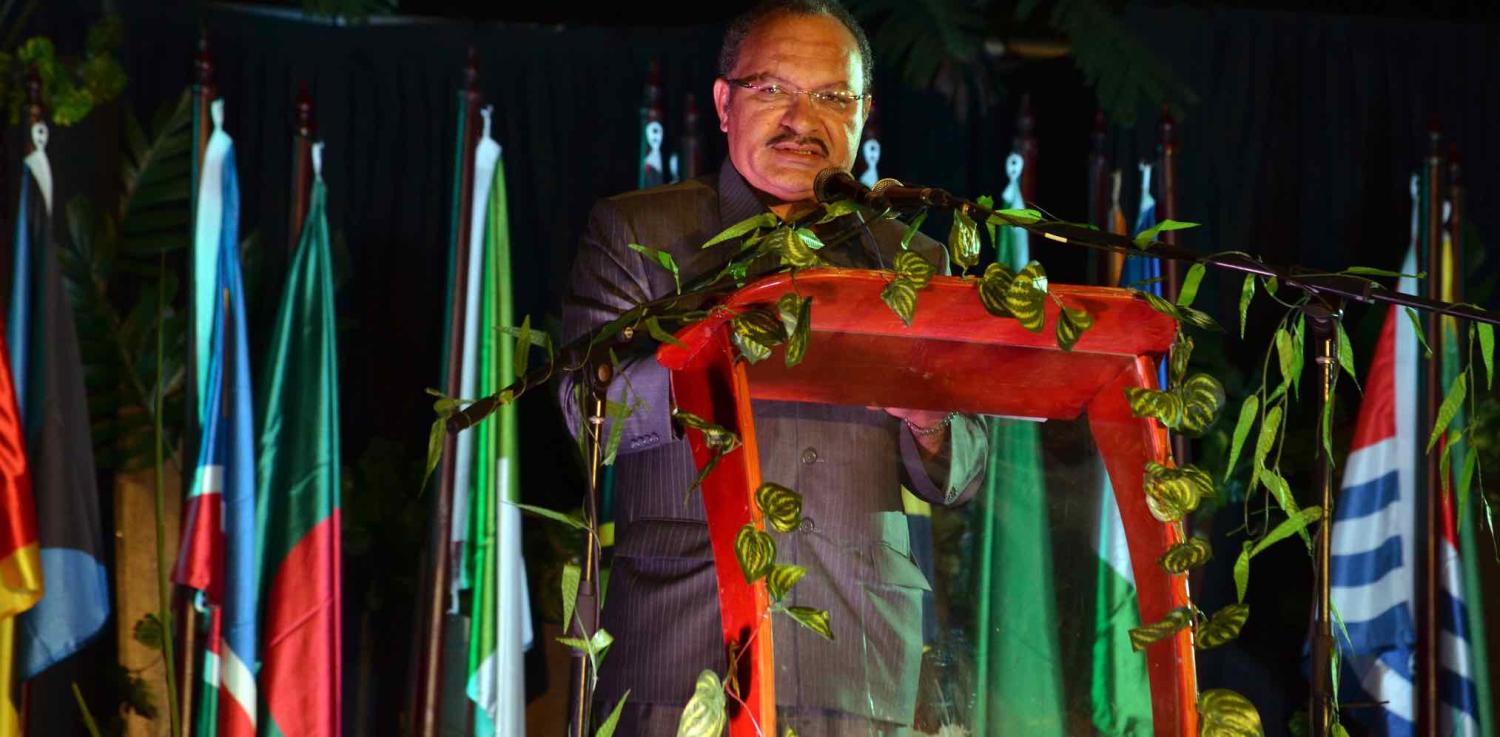It is not clear when the big-man politics in Papua New Guinea’s foreign policy began. It was likely during the prime ministership of Sir Michael Somare, in the early 2000s, when he pushed for PNG to be an aid donor to the region.
At the time, and to this day, PNG continues to be Australia’s largest aid recipient, so Somare’s aim seemed hugely ironic. The ambition kicked off debates in the national newspapers between Somare’s cohorts and critics.
With the exit of Somare and the entry of Peter O’Neill, the benevolence grew. In 2013, O’Neill unveiled the Pacific Aid program and proceeded to make donations to various Pacific countries, including a whopping US$18.5 million of funding for the Fiji national elections in 2014.
The O’Neill Government also needed to deliver on several infrastructure-heavy commitments made in the heat of promised liquefied natural gas (LNG) returns. These included the Melanesian Arts Festival in July 2014, and the South Pacific Games in July 2015. The Melanesian Arts Festival was a last-minute scramble, hosted in makeshift premises. The South Pacific Games, although heralded a success, went ahead with several venues incomplete.
However, this didn’t stop the then sports minister, Justin Tkatchenko, and then Governor-General, Sir Michael Ogio, from announcing a possible bid for the 2026 Commonwealth Games.
Three years later, some of the South Pacific Games venues are still to be completed, others are not open to the general public, and many have been closed temporarily due to unpaid service bills accumulated from the Games.
This is an example of what may happen to the infrastructure being built now to host the APEC summit in November this year, which expects to see leaders from 21 economies, and potentially thousands of officials and delegates, visit Port Moresby.
In the absence of accurate government facts and figures on the economic benefits these commitments will bring to PNG in real terms, it is difficult to be enthusiastic about immense government expenditure on only a few days’ meetings. Especially given the bust PNG is experiencing after the heights of the LNG pre-production stage, when economic growth rates were more than 10%.
Some of the startling boom-to-bust figures were highlighted recently by the Jubilee Australia report, which O’Neill was quick to label “fake news”.
Although the Jubilee report may go too far in insinuating the LNG project should never have occurred, it remains true that many of the predicted benefits for PNG and its people have not manifested, largely because of government mismanagement. The major earthquake that affected the LNG area in March this year highlighted the lack of benefits available to the communities affected.
Most commentators, apart from the PNG Government itself, agree that the country is in a dire economic situation. Until the 2018 budget was delivered, O’Neill refused to acknowledge that the economy was in crisis. He now says the “economy is recovering”.
However, in April the ANZ Bank released an analysis stating the PNG economy looked unlikely to recover until after 2019, and even then not until certain fiscal measurements, such as devaluing of the kina, occurred.
At the recent Australia Papua New Guinea Business Forum and Trade Expo in Brisbane, O’Neill again stated that APEC was good for PNG because it would put the country on the map, ensuring “everyone will remember where Papua New Guinea is” and not confuse it with an African country.
This may well be the most accurate statement as to why PNG is hosting APEC in 2018.

